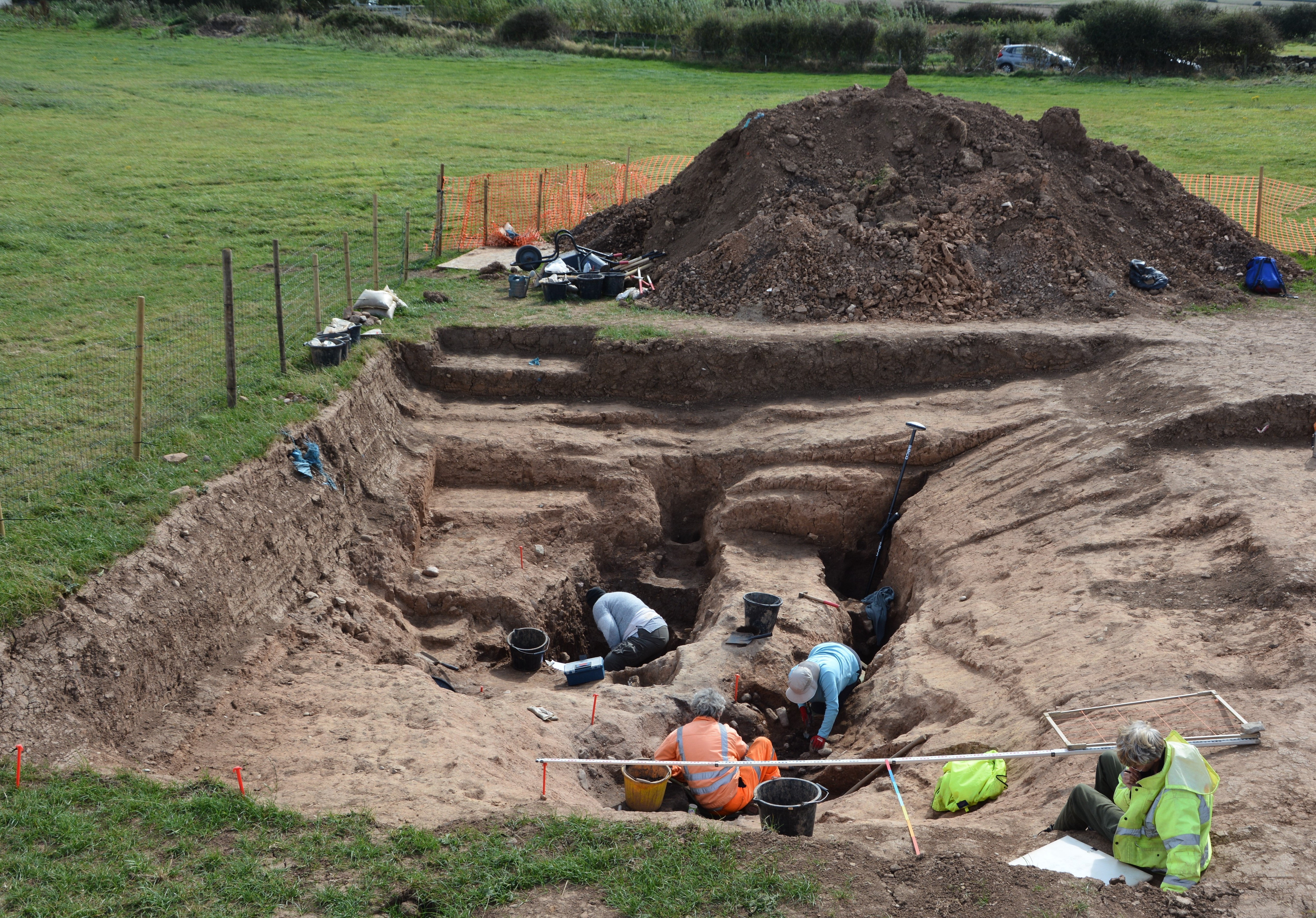Investigating Neolithic Britain: How archaeology is set to reveal prehistoric Britain’s cultural diversity
Archaeology correspondent David Keys explains how a salty tale from Yorkshire is helping to transform our understanding of the Neolithic

The extraordinary discovery of a Stone Age industrial site, revealed today by archaeologists in Yorkshire, sheds remarkable new light on what is arguably the most important and transformative period in British prehistory.
The new find – of the earliest known salt-manufacturing complex in western Europe – is likely to change the way prehistorians understand that crucial period, the Neolithic, when agriculture was first adopted in Britain.
It is important because salt would, for the first time, have allowed prehistoric Britons to efficiently preserve their meat stocks – and that ability would almost certainly have had a huge positive impact on their economy and population levels.
The discovery also shows that enhanced economic capacity was available to Neolithic Britons from the early Neolithic onwards, and therefore suggests the probability that knowledge of salt-making was imported into Britain from the continent at the same time as knowledge of farming.
The likely reason that no other such early salt-making complexes have yet been discovered in Britain is because salt manufacturing must have occurred coastally – since, apart from very rare sources of rock salt, the only other source of salt was seawater or, in rare cases, coastal salt marshes.
Read more:
However, as a result of prehistoric sea-level rise and prehistoric and later coastal erosion, most traces of early human coastal activity have largely vanished.
The availability of salt may help explain the extraordinary rapidity with which Neolithic farmers (and their cattle) spread across Britain about 6,000 years ago.
Before about 2015, most archaeologists took the view that knowledge of agriculture had spread across Britain mainly culturally; in other words, through the spread of ideas, rather than primarily through the movement of people.

However, thanks to analysis of ancient DNA, and other studies, it has recently become clear that the practice of agriculture was spread across Britain mainly by people, and not predominantly by the spread of ideas. The new scientific information shows that Britain became agriculturalised mainly by farmers from the continent spreading across Britain.
The new data seems to indicate that they first arrived in about 4,100 BC – and had spread, in substantial numbers, across much of Britain by about 3,800 BC.
Research due to be carried out by archaeologists from Historic England and several UK universities over the next few years is likely to shed more detailed light on how that extraordinary migration across Britain occurred, and what its exact chronology was.
It may well help answer some crucial outstanding questions – for instance, what happened to the pre-Neolithic Britons and how ethnically and culturally diverse was early Neolithic Britain?

Within 100 or 200 years of the Neolithic settlement of Britain, the pre-Neolithic population seems to have become culturally and genetically invisible.
But the reason for that invisibility is far from clear. Were they killed or just economically and demographically marginalised? Were they decimated by new diseases to which they had no immunity (in the same way that many Native American communities were impacted by transatlantic colonisation)?
Or were their hunter-gatherer, pre-agricultural population numbers much lower anyway – and thus became comparatively less visible after the spread of agricultural populations originating from the continent?
Alternatively, did they intermarry with Neolithic populations at lower levels in Neolithic society, which (unlike the Neolithic upper classes) has left relatively little in the way of human remains and thus DNA? (Most Neolithic tombs, where human remains were preserved for posterity, were for Neolithic elites, not the Neolithic rank-and-file.)
Getting answers to those questions, together with a greater understanding of how many different streams of agriculturalists arrived and from where, would finally help archaeologists determine the cultural and ethnic nature of early Neolithic Britain.
It seems very likely that our island may have been an extraordinarily diverse place.
Today, people often tend to assume that ethnic and cultural diversity is a largely modern phenomenon, but archaeology is increasingly suggesting that prehistoric Britain was also a very diverse place, almost certainly an island of many different cultures, religious traditions, economic models and languages.
And other evidence suggests that ethnic, religious and linguistic diversity continued, to varying degrees, for most of the rest of British prehistory and history.
Join our commenting forum
Join thought-provoking conversations, follow other Independent readers and see their replies
Comments